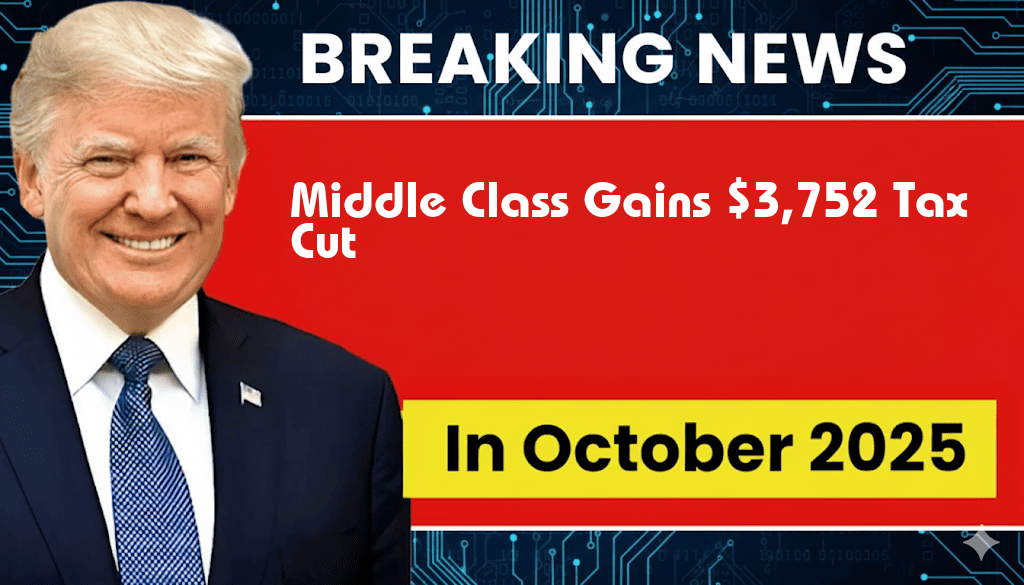Middle Class Set to Benefit from $3,752 Tax Cut Nationwide Under New Legislation
In a significant move aimed at easing the financial burdens faced by American families, Congress has passed new legislation that will provide an average tax cut of $3,752 for middle-class households across the nation. This comprehensive tax reform, which received bipartisan support, is designed to stimulate the economy by increasing disposable income for millions of Americans. The legislation, expected to take effect in the upcoming fiscal year, focuses on broadening tax brackets, enhancing credits, and eliminating certain deductions that disproportionately impact middle-income earners.
Details of the Legislation
The new tax legislation primarily targets individuals and families earning between $50,000 and $150,000 annually. Lawmakers argue that these households have faced significant financial strain, particularly in the wake of rising living costs and inflation. Key components of the legislation include:
- Increased Standard Deduction: The standard deduction will rise to $15,000 for individuals and $30,000 for married couples, reducing taxable income substantially.
- Expanded Child Tax Credit: The child tax credit will increase from $2,000 to $3,500 per child, allowing families to claim more for their dependents.
- Tax Bracket Adjustments: Changes in tax brackets will ensure that middle-income earners face lower rates, with the first $50,000 of income taxed at 10% and the next $50,000 at 12%.
Impact on Families
According to estimates from the Tax Policy Center, approximately 70% of middle-class families will see a reduction in their tax liabilities, translating to more funds available for savings, education, and essential expenditures. This increase in take-home pay is expected to invigorate local economies as families are likely to spend their savings on goods and services.
Support and Criticism
The legislation has garnered widespread support among middle-income Americans, who have long advocated for tax relief that reflects their financial struggles. Proponents argue that the increase in disposable income will not only benefit families but also stimulate job growth as businesses respond to increased consumer spending.
However, some critics have raised concerns about the long-term implications of the tax cuts, arguing that they could exacerbate the federal deficit. The Congressional Budget Office has projected that the tax cuts could lead to a shortfall in government revenue, potentially impacting funding for essential services like education and healthcare. Critics urge lawmakers to consider the balance between immediate relief and sustainable fiscal policy.
What’s Next?
As the implementation date approaches, taxpayers are encouraged to review their financial situations and adjust their withholding accordingly. Financial experts recommend consulting with tax professionals to understand how these changes will affect individual tax liabilities and overall financial planning.
Conclusion
The passage of this tax reform represents a pivotal moment for the middle class in America, offering much-needed relief at a time when many are feeling the pinch of economic pressures. As families prepare for the forthcoming changes, the focus will now shift to monitoring the outcomes of this legislation and its impact on the broader economy.
| Income Range | Previous Average Tax | New Average Tax | Estimated Tax Savings |
|---|---|---|---|
| $50,000 – $75,000 | $7,500 | $4,500 | $3,000 |
| $75,000 – $100,000 | $10,000 | $6,500 | $3,500 |
| $100,000 – $150,000 | $12,500 | $8,500 | $4,000 |
Frequently Asked Questions
What is the main purpose of the new legislation regarding tax cuts?
The new legislation aims to provide a significant tax cut of $3,752 nationwide, primarily benefiting the middle class and helping to alleviate financial burdens.
Who will benefit from the $3,752 tax cut?
The middle class is the primary beneficiary of the $3,752 tax cut, which is designed to support families and individuals with moderate incomes.
How will this tax cut impact the economy?
The tax cut is expected to stimulate the economy by increasing disposable income for the middle class, leading to higher consumer spending and economic growth.
When will the tax cut take effect?
The $3,752 tax cut is set to take effect in the upcoming fiscal year, although specific implementation dates may vary based on legislative processes.
Are there any eligibility requirements to receive the tax cut?
To qualify for the $3,752 tax cut, individuals and families must fall within the defined income brackets that characterize the middle class as outlined in the legislation.

Leave a Reply